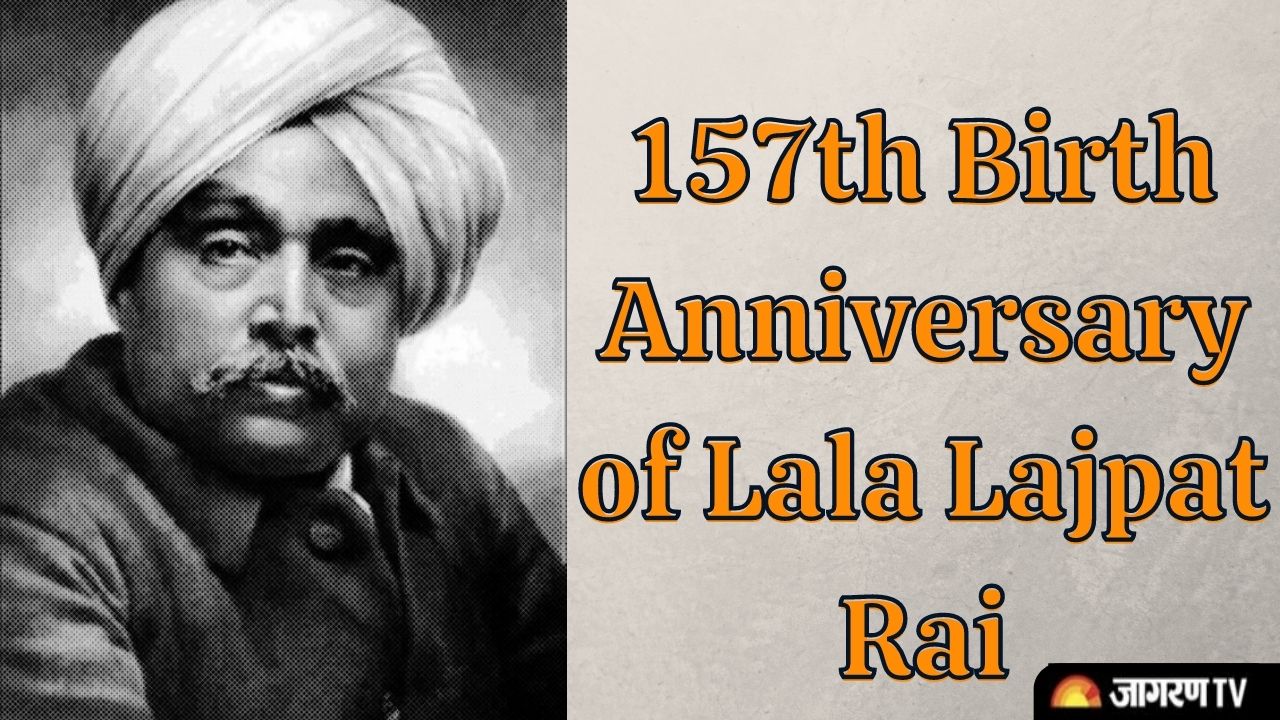Lala Lajpat Rai Birth Anniversary: Journey in Indian Freedom Struggle and Interesting Facts

Lala Lajpat Rai Birth Anniversary: Nation remembers Lala Lajpat Rai on his 157th birth anniversary. Born on January 28, 1865, in Dhudike, Punjab, Lala Lajp[at Rai is known for his contribution and sacrifice in the Indian Independence Movement. He was born in the Agarwal Jain family to Urdu and Persian government school teacher Munshi Radha Krishna Agarwal and his mother Gulab Devi.
#RepublicDayParade | Depicting 'Punjab's contribution in freedom struggle', the tableau of the state depicts Bhagat Singh, Rajguru & Sukhdev. It also depicts protest against the Simon Commission led by Lala Lajpat Rai and Udham Singh shooting Michael O'Dwyer.#RepublicDayIndia pic.twitter.com/xNy8Xs9J3B
— ANI (@ANI) January 26, 2022
Lala Lajpat Rai is famously called the Punjab Kesari or the Lion of Punjab. he was also a prominent member of the ‘Lal Bal Pal’triumvirate which included Bal Gangadhar Tilak and Bipin Chandra Pal.
The journey begins in 1916 when Lala Lajpat Rai anchored in New York.
— Swadesh (@SwadeshHQ) September 6, 2021
What was originally supposed to be a 6 month tour to write a novel on the history of America turned into a 4 year exile due to the first World War. (2/n) pic.twitter.com/E5nhxEJ0n4
Lala Lajpat Rai: Indian Freedom Struggle and Interesting Facts
-
In 1907, he was involved with the Indian National Congress and participated in the political agitation in Punjab. On these grounds, Lala Lajpat Rai was deported to Mandalay in Burma without trial. He returned the same year when the viceroy, Lord Minto, failed to produce evidence to further detain him for subversion.
-
He established National College at the Bradlaugh Hall in Lahore and enrolled Bhagat Singh as a student.
-
In 1920, Lala Lajpat Rai was elected president of the Indian National Congress.
-
He wrote a travelogue in 1916 and narrated his experiences during a tour of the United States. He met representatives of the Sikh community there.
-
Rai urged many powerful countries to understand the subjugation of India under colonial British rule.
-
He went to Britain in 1914 and was in the USA from 1917 to 1920. He founded the Indian Home Rule League in New York.
-
Rai also launched Young India, a monthly journal and formed the Hindustan Information Services Association.
-
Rai wrote a 32-page petition to the Foreign affairs committee of the US Senate in which he highlighted the atrocious administration of the British Raj and sought the international community’s moral support for the freedom movement in India.
-
He believed in Purna Swaraj (complete independence).
-
He was imprisoned from 1921 to 1923. After his release, he was elected to the legislative assembly.
-
The Simon Commission: In 1928, the British government set up the Simon Commission. As no Indian member was included in the commission, Indian people were agitated and the Indian political parties boycotted the commission. On October 30, 1928, the Commission visited Lahore. Lala Lajpat Rai led a non-violent march to protest the commission but sustained severe head injuries during an assault by the police official James Scott. Refusing to bow down in front of the British, the freedom fighter said, “I declare that the blows struck at me today will be the last nails in the coffin of British rule in India.”
-
Lala Lajpat Rai frequently contributed to several major Hindi, Punjabi, English and Urdu newspapers and magazines.
-
He wrote many books that include, The Story of My Deportation (1908), Arya Samaj (1915), Unhappy India (1928), England’s Debt to India (1917) and Young India: An Interpretation and a History of the Nationalist Movement from Within (1916)
-
In 1927, he established a trust named after his mother Gulab Devi to run a tuberculosis hospital for women in Lahore, Pakistan. His mother died from the same disease.
Related videos
-
Ram Mandir Pran Pratishtha: PM Modi Praised The Temple Workers By Showering Flowers On Them ...
-
Ram Mandir Pran Pratishtha: PM Modi Prostrated in “Dandwat Pranam” and Offered Respect to Lord ...
-
Ayodhya Ram Mandir: राममय हुआ पूरा देश, अयोध्या में राम लला की भक्ति ...
-
Ayodhya Ram Mandir: जानिए काले पत्थर से बनी Ram lala की मूर्ति की ...









